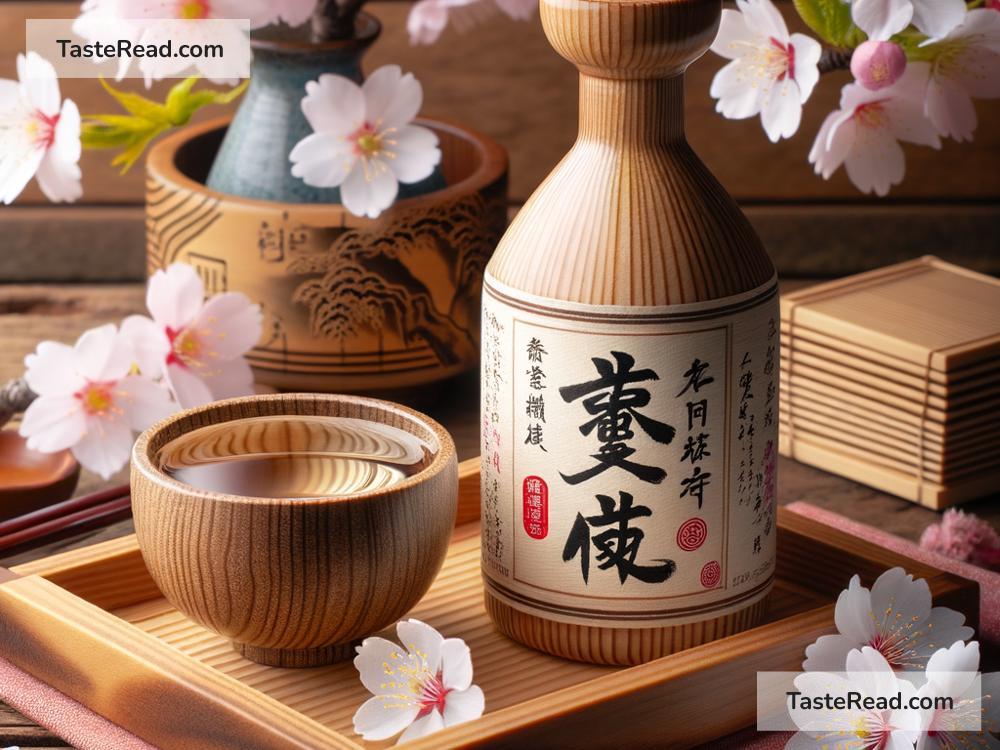The Cultural Significance of Japanese Sake
Japanese sake, often called “nihonshu” in Japan, has been an important part of Japanese culture for thousands of years. This traditional alcoholic drink is made by fermenting rice, water, and special mold called koji. Sake is not just a beverage—it is deeply tied to Japan’s history, religion, traditions, and daily life. In this blog post, we will explore the cultural significance of sake and why it continues to hold a special place in Japanese society.
A History that Binds Sake to Japanese Identity
The origins of sake go back over 2,000 years in Japan. Early forms of sake were initially made for religious ceremonies and celebrations, rather than everyday drinking. The brewing process evolved over time, becoming more refined as new techniques developed.
Sake’s role in Japanese life grew alongside the nation’s rice farming. Rice has always been an essential part of Japan’s agricultural and cultural identity, and sake—made from rice—became a natural extension of this. By the Nara period (710–794), sake was already being produced in larger quantities, and by the Edo period (1603–1868), sake brewing became a flourishing industry across Japan.
Even today, sake remains a symbol of Japan’s deep connection to rice and agriculture. Every sip reflects centuries of craftsmanship and respect for nature’s gifts.
Sake and Shinto: A Sacred Tradition
Sake plays a major role in Shintoism, Japan’s native religion. Shinto ceremonies often use sake as an offering to the kami, the gods or spirits. In shrines, sake is offered to express gratitude and ask for blessings, such as health, harvest, or protection for the community.
One famous example is the kagami biraki ritual, which means “opening the mirror.” In this ceremony, large barrels of sake are broken open, and the sake is shared among people to promote harmony and unity. The ritual often takes place at wedding ceremonies, festivals, and even business celebrations.
Another sacred tradition is the consumption of omiki, sake that has been blessed by the priests at a Shinto shrine. Drinking omiki is believed to strengthen the bond between humans and the divine.
Overall, sake’s role in Shinto rituals shows its importance as more than just a drink—it is a spiritual bridge connecting people to their ancestors, traditions, and the divine.
Celebrations and Bonds Shared Over Sake
In Japan, sake is a drink of celebration. It is served at weddings to wish the couple happiness and prosperity. It is offered during New Year’s festivities in a custom called otoso, where people drink special spiced sake to ward off illness and bring good fortune for the year. Sake is also shared during cherry blossom viewing parties (hanami) and seasonal festivals to mark joyful moments.
One touching custom involving sake is the san-san-kudo ritual during traditional Japanese weddings. In this ritual, the bride and groom, as well as their families, drink sake in a series of three sips each. The act symbolizes unity, trust, and the joining of two families.
Sake is not just about the drink itself—it’s about the people who gather around it, the conversations shared, and the connections built. Sharing sake creates moments of warmth and camaraderie, making it a drink of togetherness.
Regional Pride in Sake Brewing
In Japan, sake brewing is an art that reflects local traditions, climate, and craftsmanship. Different regions produce sake with unique flavors and characteristics, influenced by their water quality, rice type, and brewing methods.
For example, Niigata prefecture is known for its clean, crisp sake, thanks to its pure snowmelt water and high-quality rice. Kyoto produces sake that is flavorful yet smooth, often associated with elegance. Hiroshima has sake with a softer, sweeter taste, made using soft water from the region. Visiting these areas and tasting their local sake is a way to connect with their distinct identities.
Sake brewers, called toji, are highly respected for their dedication and skill. Many families have passed down sake-making knowledge for generations, ensuring that this traditional craftsmanship lives on.
A Modern Revival
While sake has been a beloved part of Japanese culture for centuries, it has faced challenges in recent times. As younger generations turn to other drinks like beer and wine, sake consumption in Japan has decreased. However, there has been a recent revival of interest, both within Japan and internationally.
Craft sake breweries are experimenting with new flavors and packaging to appeal to modern tastes. Sake is now enjoyed with a wider variety of foods, not just traditional Japanese dishes. Pairing sake with cuisines like Italian or French has gained popularity, showing its versatility.
Internationally, sake exports are increasing, and more people around the world are discovering its unique taste and cultural significance. Sake tasting events and festivals in countries outside Japan are helping to spread its charm across borders.
Conclusion
Japanese sake is more than an alcoholic drink—it is a cultural treasure. Its close ties to religion, agriculture, family, and celebrations make it a reflection of Japan’s rich history and traditions. From Shinto rituals to casual gatherings, sake is a symbol of connection, gratitude, and joy.
As sake continues to gain appreciation worldwide, it reminds us of the importance of preserving traditions while embracing new ideas. Whether enjoyed in a quiet moment of reflection or as part of a lively festival, Japanese sake carries the spirit of Japanese culture in every glass.
So the next time you have the chance to taste sake, remember that you’re experiencing more than flavor—you’re immersing yourself in a tradition that has shaped Japan for centuries. Kanpai! (Cheers!)


